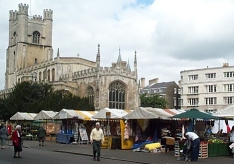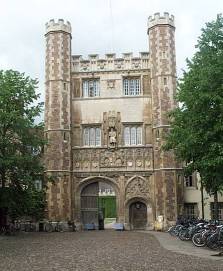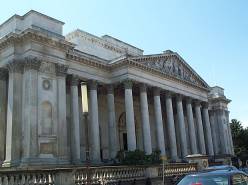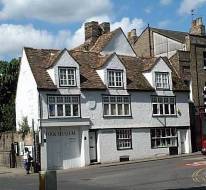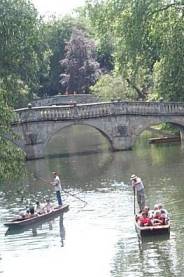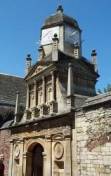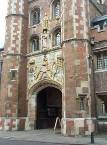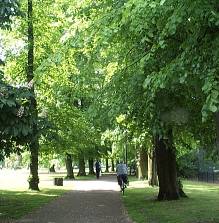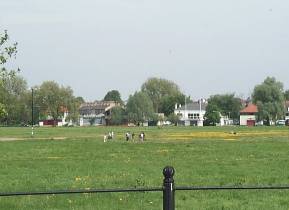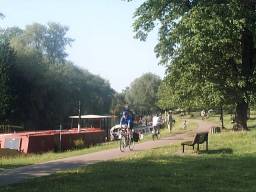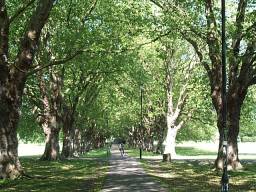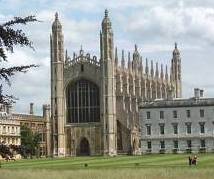
Kings College Chapel
Many tourists visit Cambridge each year to see the historic university, its buildings and the beautiful Backs. King's College Chapel (see left) is the most famous building in Cambridge. Outside, the best views of the chapel are from Kings Parade and Queen's Road, and from its entrance via Senate House Passage or Trinity Lane. You need to pay to enter, but the fan vaulted ceiling, stone carving and stained glass are worth it. You can also attend a chapel service. See the King's Chapel website for details.
The Church of the Holy Sepulchre, otherwise known as the Round Church, is an attractive small Norman church at the junction of St. John's Street and Sidney Street (see right). It is one of only four round churches in Britain. They were built by the Knights Templar. The Round Church is still used for the occasional service, but has various other exhibitions etc. You should be able to look inside, but may have to pay.
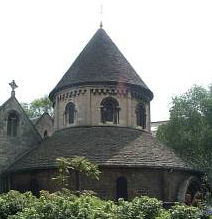
Round Church
